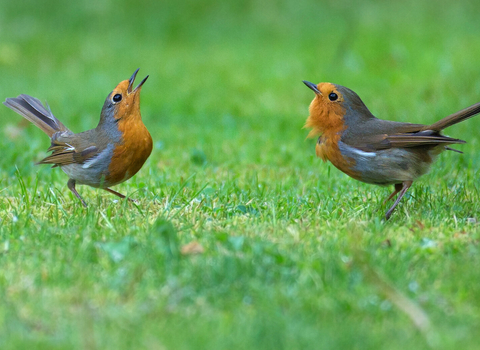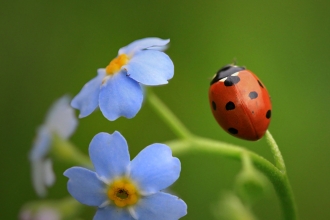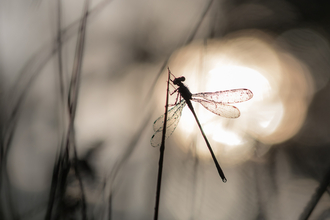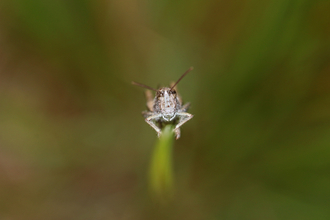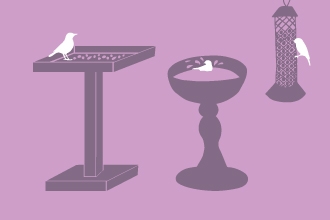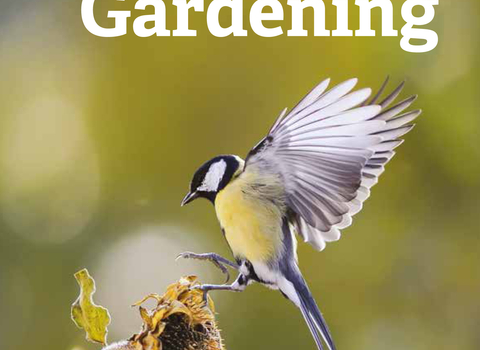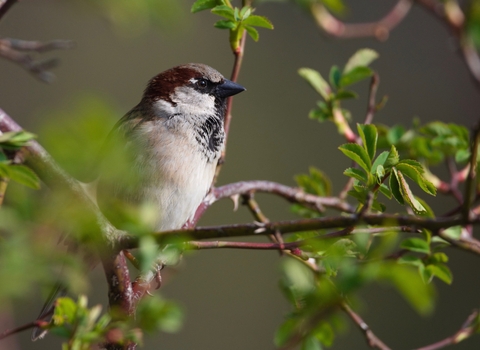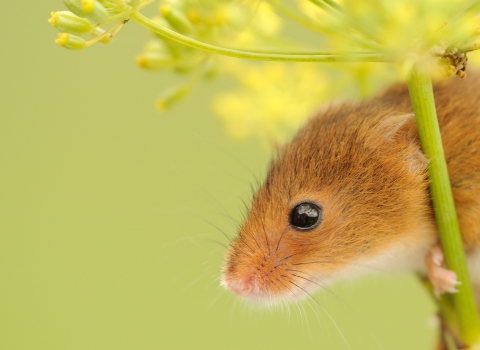If you are privileged enough to own a garden, you have probably found a way to feed the birds.
Even the most single-minded plant enthusiast will enjoy the spectacle that birds can bring; the elements of movement, colour and song add an extra dimension to any garden and there is a particular thrill in knowing that a tiny living thing has chosen your space.
You may just enjoy watching the birds through the window, you may keep binoculars and a bird book close to hand, you might compile a list of the species that have visited your garden or you might study the intricacies of bird behaviour but how much do you know about the birds that you see?
I value my garden more for being full of blackbirds than of cherries, and very frankly give them fruit for their songs.writing in The Spectator in 1712
The enjoyment of sharing your garden with birds clearly goes back a long way. Let our trustee and keen birdwatcher, Roger Pannell, guide you through some of our more common garden birds
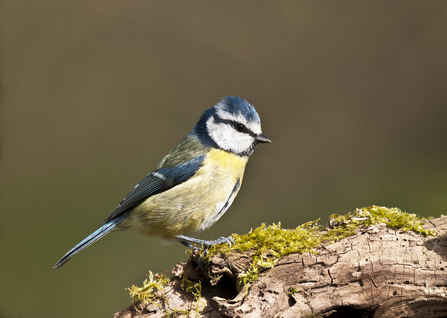
Blue tit by Bob Tunstall
Delightful little birds that grace most gardens with their acrobatic antics; as one of our smallest and lightest birds, they can access the furthest ends of branches searching for small insects. Juvenile birds are duller and greener than adults but, while the sexes are difficult for us to separate visually, the birds can see in UV light – making their crests very bright indeed, Females often incorporate aromatic plants such as lavender into the nest, possibly due to their antibiotic properties.
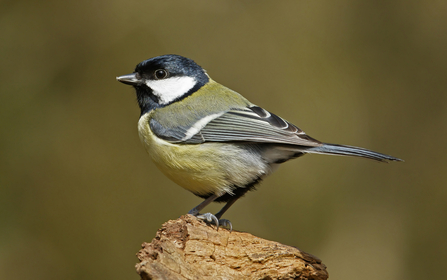
Great tit by John Caswell
The largest of the UK’s tit species, great tits are easily recognised by size and by the jet black crown and stripe down the chest. The black stripe is thinner in females whereas in males it extends to between their legs; the more dominant the male, the bolder and wider the stripe. Great tits take to artificial nest sites better than any other tit, which means that their breeding habits are probably the most thoroughly studied of any bird.

Robin by John Caswell
The iconic ‘gardener’s friend’, it is thought that the robin following behind you as you turn over the soil may well be treating you as though you were a wild boar rooting in the wood disturbing invertebrates. In summer a pair of robins will defend a territory of that's about one sixth the size of a football pitch. The red breast is used for territorial display and defence; adults will attack crude models and even bunches of feathers as long as they are red.
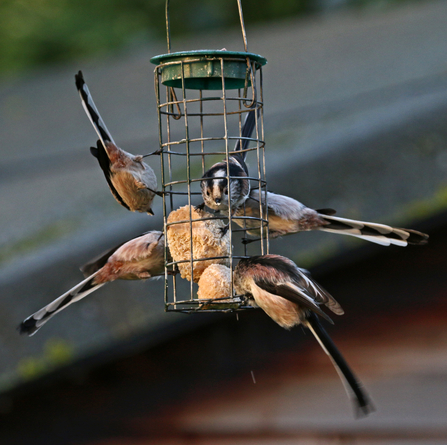
Long-tailed tits by Wendy Carter
Long-tailed tit Aegithalos caudatus
These tiny gregarious birds, sometimes seen in parties of up to 20, are increasingly seen on garden bird feeders. Lucky readers may find their barrel-shaped nest in a local hedgerow or bush. Nests are made from moss, lichen and small feathers glued together with spiders’ webs; the stuff of poetry. Birds Britannica describes them as ‘roving through their communal territory enveloped in a perpetual cocoon of soft babbling contact notes’. Local names include mumruffin, bum barrel and jack-in-a-bottle.
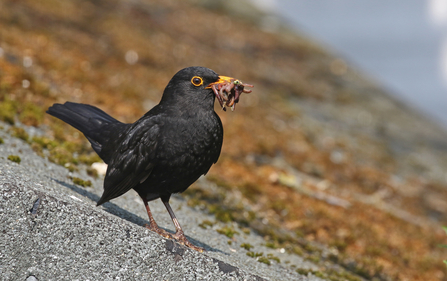
Blackbird by Wendy Carter
You may think that your garden blackbird stays with you all year round and, whilst that may be true, huge numbers of birds come to our gardens from the continent in the winter; some from as far as Russia. The British Trust for Ornithology has recorded one bird that spent three summers in a Norfolk garden and three winters in the same garden in Devon. In the breeding season we’d argue that the blackbird’s song can rival any bird, even a nightingale!
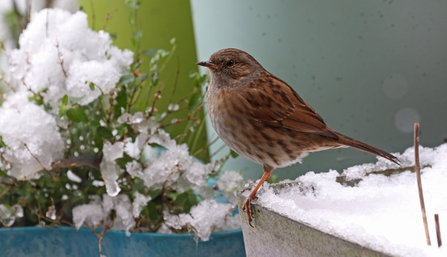
Dunnock by Wendy Carter
Also known as a hedge sparrow and hedge warbler, this is neither a sparrow nor a warbler. It’s actually a hedge accentor but the name dunnock, which means ‘small brown bird’, is so descriptive that it has stuck. Its apparently unassuming nature led to it being a favourite of the Victorians who praised its shyness. Little did they realise that it has a complicated sex life; watch closely to see the female sneak into the shrubbery after a second partner.
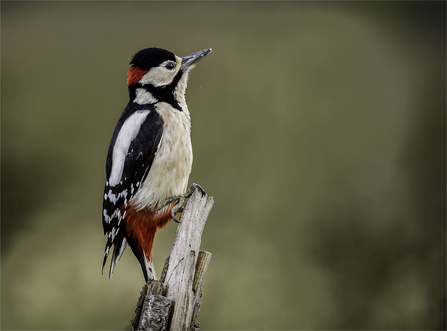
Great spotted woodpecker by Brian Eacock
Great spotted woodpecker Dendrocopos major
Woodpeckers have lots of adaptations to help their way of life. Two toes point forwards and two back; together with stiff tail feathers, this supports them on a tree trunk. Tapping up to 10,000 times a day with 1000x the force of gravity, the bird needs to protect itself from concussion. The brain, therefore, is small and surrounded by spongy bone, the base of the tongue wraps round the brain, the beak deforms on impact and muscles in the neck distribute the shock round the body.
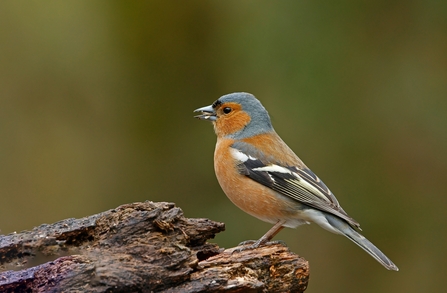
Chaffinch by John Caswell
One of the UK’s most common birds, like many of our garden birds it is naturally a bird of woodlands but has adapted to many different habitats in Britain. Recordings have shown that in different parts of the country chaffinches have their own regional ‘accents’. Migrating male birds congregrate together, giving them the nickname ‘bachelor bird’. Chaffinches, like greenfinches, are susceptible to diseases that can be passed on at bird feeders making it essential that we all keep our feeders clean.
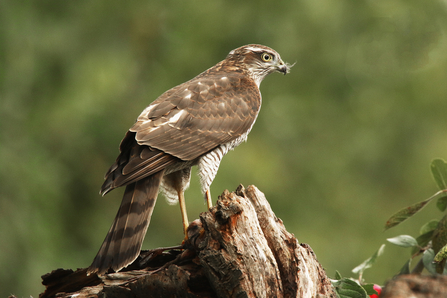
Sparrowhawk by Rosemary Morris
Have you been startled by a breeze as the garden birds dash for the hedgerow and a grey shadow disappears? Sparrowhawks are increasingly seen in gardens; these magnificently adapted predators are doing an essential job by removing from our garden ecosystem birds which are not 100% fit. It’s the stuff of evolution that has given us the wonderful variety of our gorgeous garden birds.

